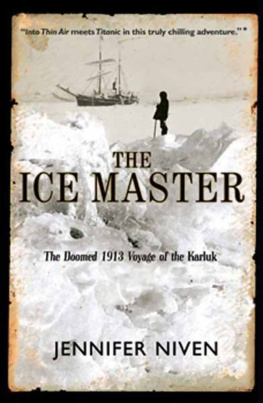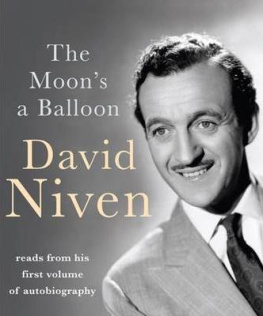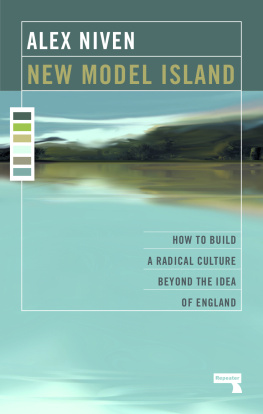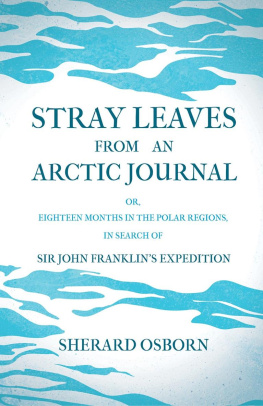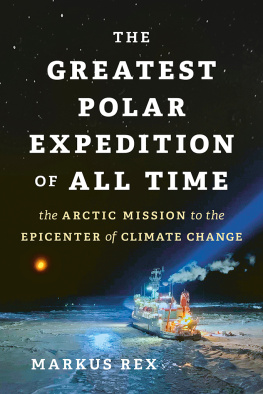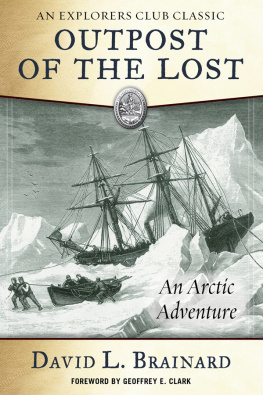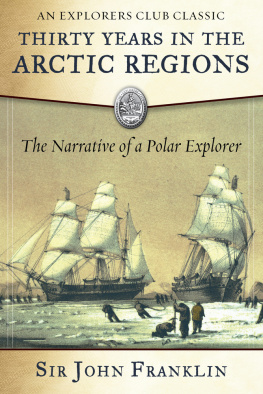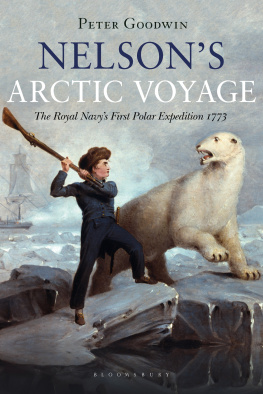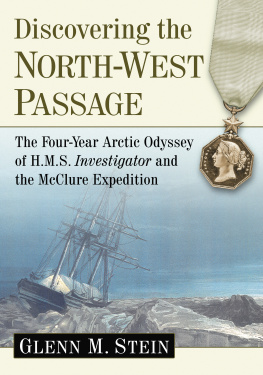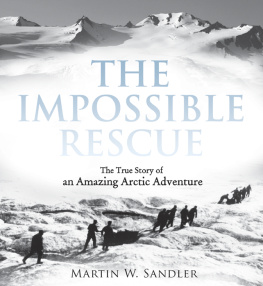For Penelope Niven and Jack Fain McJunkin, Jr.,
my mother and father.
And to the memory of the twenty-two men, one woman, and two children
who stayed aboard the Karlukthose who came back and those who did not.
It is good for the world to hear suchstories sometimes. It makes thelives of Mallochs and Mamenslive on after them.
M RS . R UDOLPH M ARTIN A NDERSON ,
WIFE OF S TEFANSSONS
SECOND IN COMMAND, IN A LETTER TO WILLIAM M c KINLAY ,
OCTOBER 30, 1914
Contents
I am afraid that the task has taken complete charge of me.
W ILLIAM L AIRD M C K INLAY
W illiam Laird McKinlay, a small, weak infant, was not expected to live very long. The doctors told his parents that he would be lucky to survive a year and that, if by some miracle the child should live longer, he would never make it to adulthood.
But William McKinlay did make it to adulthood. Against all odds, he was alive and well in 1913, a slight, attractive young man of twenty-four, fair-haired, articulate, with refined manners and a quick intellect. He had stopped growing at five feet four inches, earning the nickname Wee Mac from friends and family. It was a name he did not mind. He was, after all, lucky to be alive.
He didnt fully appreciate this fact until later in life after he joined Vilhjalmur Stefanssons ambitious Canadian Arctic Expedition in June 1913, signing on as magnetician and meteorologist. When McKinlay was an old man, he wrote, The two years, 1913 and 1914, saw the last two expeditions to the polar regions of the old historic type in the wooden ships and before the days of radio and aeroplanesthe Karluk to the north and Shackletons Endurance to the south. Both vessels met the same fate. Both stories tell of strenuous journeys of seven or eight hundreds of miles to bring rescue. The Endurance story ended happily and has been fully and faithfully recorded; the other ended tragically but has never been well and truthfully documented.
McKinlay spent most of the post-Karluk years of his life writing about and collecting material on the Canadian Arctic Expedition and Vilhjalmur Stefansson. He was a man obsessed, determined to set the record straight, and to clear the name of Captain Robert A. Bartlett who, he believed, had saved his life. McKinlay finally published his version of the story in 1976 at the age of eighty-five. But for the next seven years, up until his death in 1983, he was actually working on a more forthright account of the 1913 Arctic expedition and Stefansson, its leader. He never got to share that unfinished account with the world. Instead, his rough manuscript and papers were consigned to archives and libraries, read only by the random, interested researcher.
His notes are voluminous and amazingly detailed, many written in his neat yet shaky eighty-some-year-old hand. He had kept three diaries documenting his experiences in 1913 and 1914, one written expressly for the Canadian government, and the other two written only for himself. In these private journals, he recorded the full, tumultuous emotional experience of his journey. One of the journals was kept in pencil, written in a series of old student notebooks, and the other was an expanded version of this, painstakingly recopied by hand once he returned to civilization. He selected only statistics and the driest facts for the version he submitted to the government.
People who knew him describe a man haunted by the expedition. He himself wrote, Not all the horrors of the Western Front, not the rubble of Arras, nor the hell of Ypres, nor all the mud of Flanders leading to Passchendale, could blot out the memories of that year in the Arctic.
Until his death at the age of ninety-two, McKinlay was not running from the disturbing memories of the past, but trying to recall them and present them to the world. The fact that this mission was never quite accomplished was one of the primary reasons I wanted to write this book. What could drive a man to devote sixty-some years of his life to recording the events of one year? Was it the horrors he witnessed? The memory of his tragically lost comrades? The debt he felt he owed to his hero, Captain Bartlett? Or that the only other point of view available for public consumption belonged to Stefansson, the man McKinlay held responsible for the Karluk tragedy?
Legendary Norwegian explorer Roald Amundsen went so far as to call Vilhjalmur Stefansson the greatest humbug alive. There were some, in fact, who considered Stefansson a laughing stock for his alleged discovery of a race of Blond Eskimo. His is the name that remains in the history books, however, while the men of his 19131914 expedition have been overlooked, lost, and essentially forgotten. McKinlay did his best to change this, but died before he could set the record straight. By tackling the subject myself, it is not my intention to dispute the good that Stefansson did in his lifetime or the valuable discoveries he made, nor do I intend to delve into Stefanssons pre- or post-Karluk careers, except as they relate to this particular expedition.
McKinlays notes have been extremely helpful to me as I have attempted to reconstruct this fateful tale. His extreme patience with the mountains of material, as well as his great thoroughness, are impressive. But I have also made extensive use of diaries kept by seven other members of the expedition. I have included a note at the end of this book on my research, sources, and methodology.
The most important thing to me is that the people of the Karluk be allowed to speak on these pages in their own distinctive and passionate voices. In some places, they speak directly, and all dialogue that appears in quotes in this book comes verbatim from their own diaries or letters, or from interviews with the descendants and survivors. Likewise, any insight into the feelings or thoughts of these people comes from the feelings and thoughts explicitly expressed in their journals and descriptions of the Arctic conditions are either quoted directly or adapted from specific observations from journals and diaries of the men who experienced them.
I want you to know them by the names their comrades called them, and for that reason I have sacrificed formality in the following cases: first mate Alexander Anderson, known as Sandy to his shipmates, will also be known as Sandy here; Seaman Hugh Williams, who was only addressed by his nickname, Clam, remains Clam; and the Inuit woman Kiruk is referred to by the name that the men of the Karluk affectionately called herAuntie. In addition, although Inuit is the proper term in this present day, during the time in which these men lived, the term Eskimo was used instead. To avoid confusion with the firsthand accounts from the time, I have chosen to use that word as well, even though it is now considered inaccurate.
McKinlay spent his life searching for answers and an understanding of what happened to him in the Arctic in 1913 and 1914. If there is any explanation, he wrote at the end of his life, I hope that someone may find it in the mass of material available and give it to the world.
That is what I have done my best to do.
THE CREW
Robert Abram Bartlettmaster (age 36)
Alexander Sandy Andersonfirst officer (age 22)
Charles Barkersecond officer (twenties)
John Munrochief engineer (thirties)
Robert Williamsonsecond engineer (age 36)
John Bradyseaman (twenties)
Edmund Lawrence Golightly (alias Archie King)seaman (twenties)
T. Stanley Morrisseaman (age 26)
Hugh Clam Williamsseaman (twenties)
George Breddyfireman (early twenties)
Fred Maurerfireman (age 21)
Robert Bob Templemancook and steward (early twenties)
Next page
